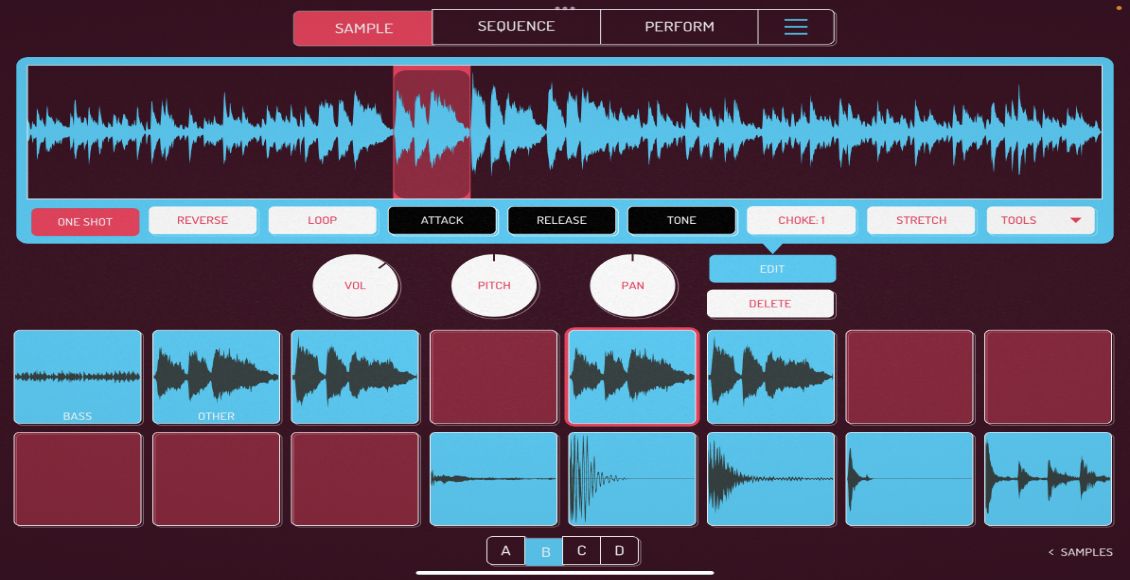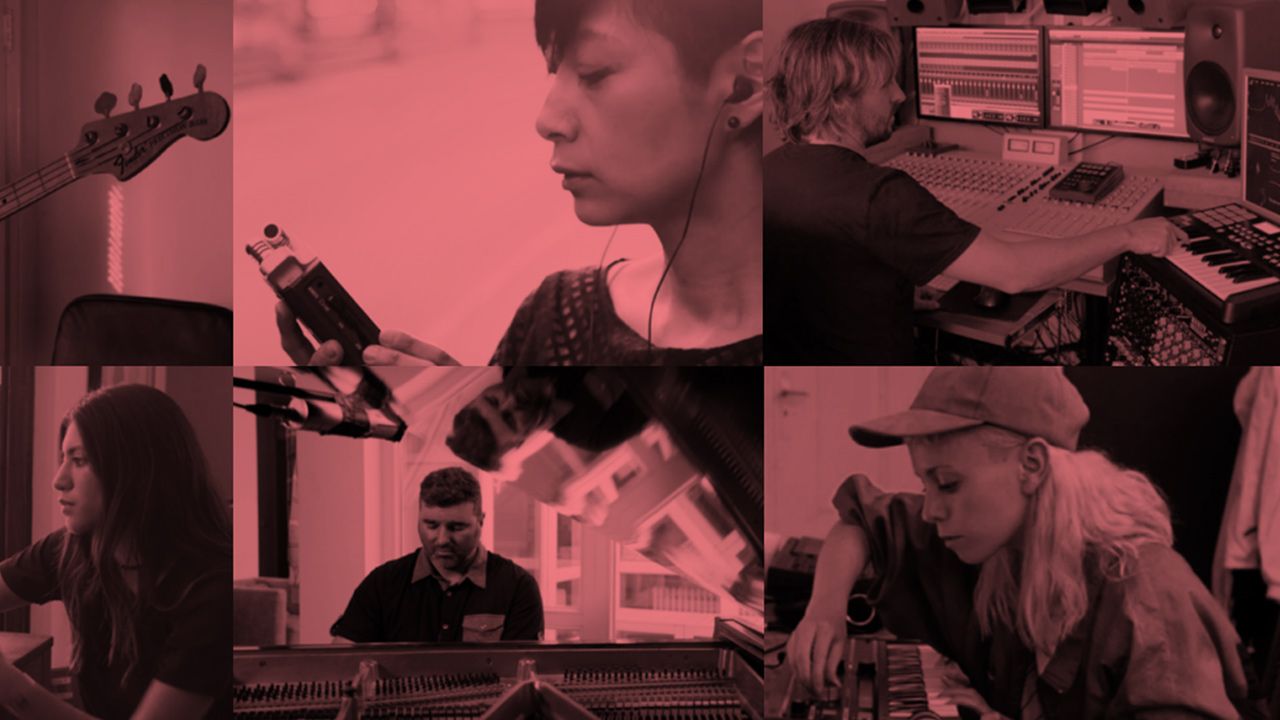How many times have you searched through the hundreds or thousands of tracks in your library and found yourself trying to remember what a particular track sounds like? I’m sure some people will say they know every single song in their collection at all times, but that was a lot more believable when you only showed up to the club with a crate of vinyl or a book of CDs.
When you are squinting into your 13-inch computer screen at 1am in a sweaty club, with three girls tapping you on the shoulder telling you what track they want to hear for their friend’s birthday, I doubt you can still remember what that demo your friend sent you last week sounded like. You’re pretty sure it should mix well. It’s in the same BPM range and relative key as the one blasting on the dance floor, but will it really work? Was it a laid-back warm up song, or a great groove track? Did it have a solid bouncing bassline or a large woman belting out a passionate chorus? I have been in this position so many times, I devised a system that should help you to never question your next track again.
THE TRACK TYPE NUMBERING SYSTEM
The advent or DJ software made it simple to browse through and sort thousands of tracks by BPM. And back in the day, only the most persnickety DJs took the time to find a song’s key, as it had to be done with a keyboard and few hours spent playing along with each tune. Nowadays, anyone can take an extra few hours and get piece of software to analyze their entire music collection and label each file with the key of the track, in order to mix tracks harmonically. So with tracks labeled by key and BPM, DJs have great guidelines for crafting their sets.
However, let’s go back to that crucial moment when you have to decide what to play next and you’re trying to remember if the drums, bassline, basic groove and other important elements of your buddy’s new remix are exactly what you need. BPM and key tags still won’t help you in those situations, but picking the right track to play at those moments could be what ends up separating you from the pack of mediocre DJs.
When someone is describing a song that they are trying to get you to remember, the first thing you ask is, “What type of track is it?” That very question lead me to come up with what I call the Track Type Numbering System. While everyone has their own ways of describing a song, I feel like we can fit most songs in most genres (especially when it comes to dance music) into three categories, generally describing the feel or intensity of a particular song. They are as follows:
TRACK TYPE I
This is a track that is light in character. It is minimalistic in its instrumentation doesn’t have a strongly defined melody. It may be more reliant on its lighter percussive elements and rarely has any vocals besides maybe a short sample or something far from the forefront of what the listener hears. In dance music it usually uses a lot of slow building elements and never really reaches a peak of any kind. If you DJ house or drum and bass, this may be a warm up track for you or something that gets played in the first few sets of the night, but peak-hour DJs would rarely get away with dropping something like this unless they were trying to go for some extreme momentum effect of some kind. However, if you are playing deep house or a chilled-out liquid set, this may be what comprises the majority of your set.
TRACK TYPE II
This is a track that is medium in character. Its will have more energy to to it than a Type I, with stronger, more defined percussion and a flowing bassline. It is catchy, and may have some kind of defined vocals, but vocals that are usually not especially memorable to the listener. This type of track set a great groove for the dance floor, but probably won’t get people jumping up and down. You can use this track type to bridge from a Type I into a Type III to create a transitional build in energy, or to take the intensity down for a bit without clearing the floor. A trance DJ may use this type of track to set the stage before banging out some anthems, or a minimalistic tech-house DJ may play a lot of these tracks with a few Type Is peppered in to keep things from getting monotonous over the top.
TRACK TYPE III
This is a track that is heavy in character. It is full in its instrumentation and has everything going on at once. It has strongly defined drums, a fat bassline and a very catchy melody. It is extremely memorable with its big build-ups and peak-hour energy. Most people at the club may already know it, and if they don’t, they should. In some cases it may be the track people ask you about after your set. It could be the next big release from a popular producer in your genre, or a classic anthem that will have everyone singing along. Every genre has this type of track. These are sure-fire songs that you can rely on to get everyone jumping up and down.
However, approach with caution; there is no better way to spoil the night and to expose yourself as an inexperienced DJ than to relentlessly slam these out over and over throughout your set. While I could write another entire article just discussing why you shouldn’t do that, for the sake of time I can promise you that people will quickly lose interest and eventually go home.
HEAR IT, TAG IT, DROP IT
I understand that every genre is different — especially when you throw in sub-genres.A Type I track in one genre may sound like a Type II in another. But as a general rule, most songs in your collection will fall into one of these categories that is relative to the style of music you play. If you have a track that seems to fit into two types, it’s up to you where to put it. You could even give it a II/III label or something to that effect. After all, it’s your library, and you’re the one who has to quickly identify the labels in the middle of your set. Make this Track Type Numbering System work best for you.
I have seen other people’s methods for representing the feel of a track by color coding them, but I don’t think that works as well and the Track Type Numbering System because 1) you have to be able to see the album art and have the ability to change the album art, and 2) there are frankly too damn many colors and interpretations of what those colors mean. With the Track Type Numbering System, you can use your software of choice to open the file tags and type a I, II or III into the Comment tag and know exactly what they stand for. Then in Traktor or another DJ software, you can browse tracks by their Type from the Comment field.
In my own experience, and with the other DJs I have turned on to this labeling method, if you take the time to go through your collection, preview each of your songs and tag them by their song type, it will make sorting through your music far easier when you are mixing and much less of a guessing game. This way you can spend less time monitoring tracks to remind yourself what they sounded like before you cue them up. Then, after banging out that anthem that everyone was waiting for, you can sip on your beer while scrolling around for a Type II track that has that perfect groovy bassline to bring things down a bit.
Kyle Rayner previously wrote “Get More from Your Music Library” in June, 2009 and collaborated on the MixVibes CROSS review. Email him: djkylerayner at gmail.com.









